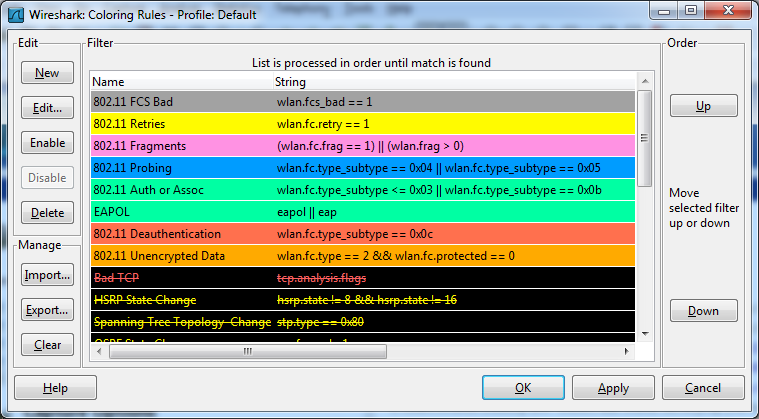


You see only one color for all different SS7 traffic types, because wireshark pre-configures coloring only for standard protocols.You cannot see the interesting addresses in packet list view due to different addressing in SS7 and multiple layers involved.Here is an example of SS7 traffic using default wireshark settings: The problem is that this configuration is not at all suitable for specific needs of Telecom traffic analysis, and does not give you a quick vision when you are working on an SS7 Pcap. As an IP datagram contains both a source and a destination address, the expression will evaluate to true whenever at least one of the two addresses differs from 1.2.3.4.Primary usage of wireshark is to visualize packets coming from traditional IP traffic, that is why default wireshark settings provides a relatively good overview of IP packets for most of the use cases. The reason for this, is that the expression ip.addr != 1.2.3.4 must be read as “the packet contains a field named ip.addr with a value different from 1.2.3.4”. Instead, that expression will even be true for packets where either source or destination IP address equals 1.2.3.4. Unfortunately, this does not do the expected. Then they use ip.addr != 1.2.3.4 to see all packets not containing the IP address 1.2.3.4 in it. Often people use a filter string to display something like ip.addr = 1.2.3.4 which will display all packets containing the IP address 1.2.3.4. Using the != operator on combined expressions like eth.addr, ip.addr, tcp.port, and udp.port will probably not work as expected. Which filters packets where either the source OR the destination is not C, and that's every packet, so it shows every packet. Which filters packets where source or destination match, and then hides them (correctly). In Boolean Logic, A not equals B and not A equals B are the same test.īut, the relevant part of the WireShark documentation linked by Jürgen Thelen explains that in WireShark, ip.addr covers both the source and destination field, so the test is more like: not ((A or B) equals C)


 0 kommentar(er)
0 kommentar(er)
